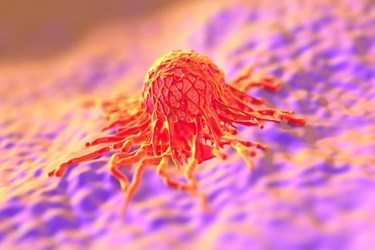Implantable Drug-Delivery Device Could Treat Cancer, HIV, Or Chronic Disease

A multidisciplinary team of scientists from Texas has developed an implantable drug delivery device that uses nanochannels to regulate dosage of drugs over time. Researchers say the implant is “drug agnostic” and could potentially be paired with a variety of pharmaceutical treatments for a host of diseases or ailments, such as cancer therapies, HIV drug cocktails, immunotherapy, or cortisone injections for joint pain.
Recent research suggests that implementing “smart” features into pharmaceuticals could dramatically improve their performance, according to Christopher Bettinger, a bioengineer at Carnegie Melon University (CMU). Devices currently in development allow for better therapeutic targeting, and by reducing the number of pills a patient takes to reach the targeted ailment, providers can potentially reduce toxicity while increasing efficacy — an alternative to traditional methods that is both safer and more cost-effective.
Traditional drug delivery — oral medications or injections — relies on the patient’s ability to adhere to treatment, and dosage mistakes can cause illness or resistance to therapy over time, explained Lyle Hood, a professor of mechanical engineering at the University of Texas at San Antonio (UTSA). Hood collaborated with Allesandro Grattoni — chair of the Department of Nanomedicine at the Houston Methodist Research Institute — to develop a minimally invasive device that could administer correct dosage automatically.
“It’s an implantable capsule, filled with medicinal fluid that uses about 5000 nanochannels to regulate the rate of release of the medicine,” Hood told UTSA Today. “This way, we have the proper amount of drugs in a person’s system to be effective, but not so much they’ll harm that person.”
The proposed device is implanted under the skin and can deliver drugs for several days or several weeks. In a study published in Biomedical Nanotechnology, authors demonstrate proof-of-concept, showing the system’s ability to deliver chemotherapy, radio sensitization, immunotherapy, or imaging contrast. The device also was compatible with magnetic resonance imaging (MRI), permitting “multipurpose functionality with different therapeutic approaches as well as diagnostic imaging.”
Grattoni’s original design, which was larger, was developed to treat HIV over the course of one year. Hood explained that non-adherence to medication is the most common cause of HIV becoming resistant to treatment.
“In HIV treatment, you can bombard the virus with drugs to the point that the person is no longer infectious and shows no symptoms,” said Hood. “The danger is that if that person stops taking their drugs, the amount of medicine in his or her system drops below the effective dose and the virus is able to become resistant to the treatments.”
Though the current prototype is permanent, Hood said the team was working with biomedical engineers to develop different versions of the design that were biodegradable, 3D printable, or swallowable.
In 2015, the FDA cleared the first ingestible device for medication adherence, developed by Proteus Digital Health. According to Proteus, noncompliance costs the U.S. healthcare system between $100 and $300 billion per year.
The combination drug-device market is currently growing at an exponential rate. In a recent white paper, Winston Brown, VP of global quality for Phillips-Medisize, estimated that the global market for these devices would reach $115 billion by 2019.
